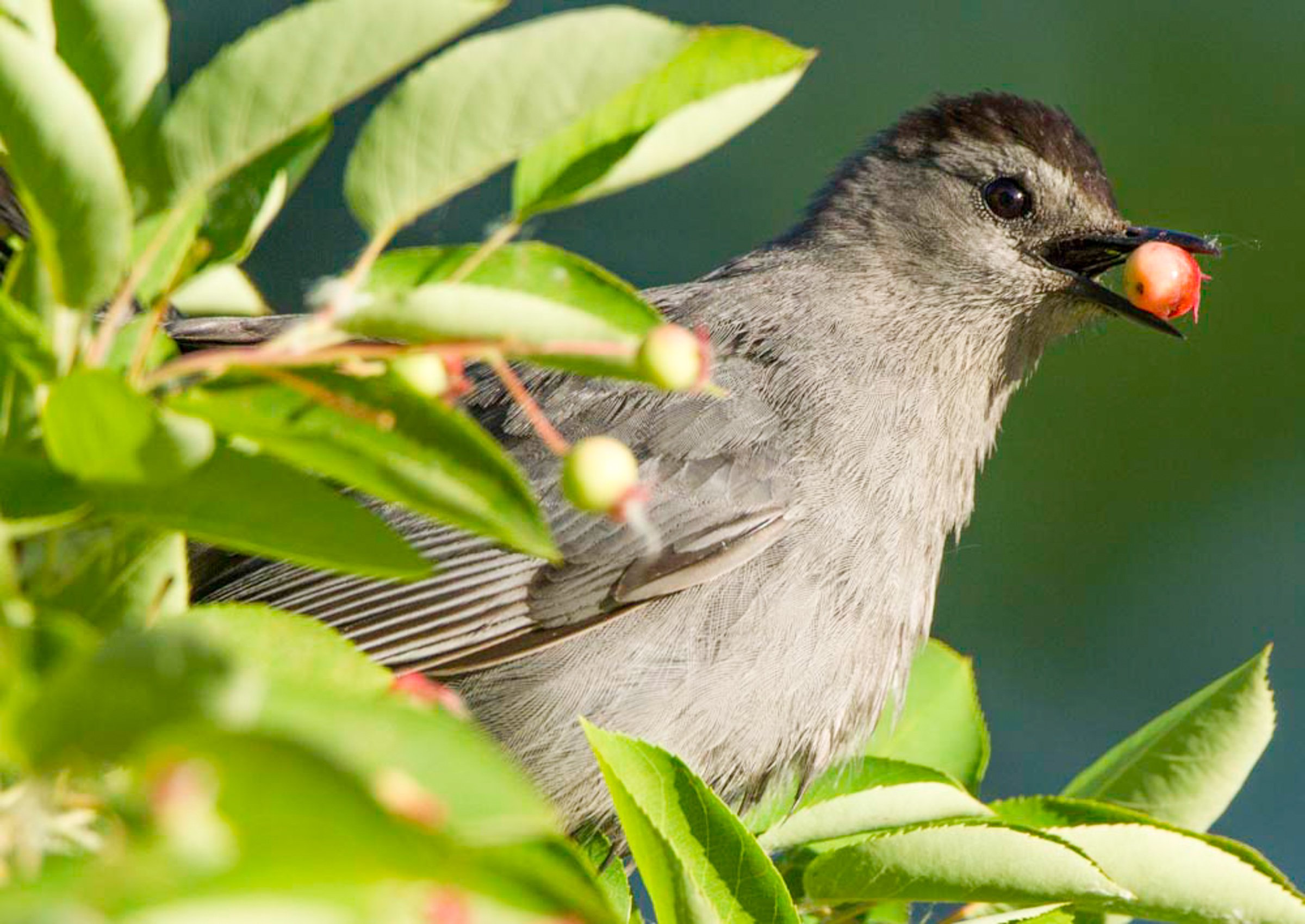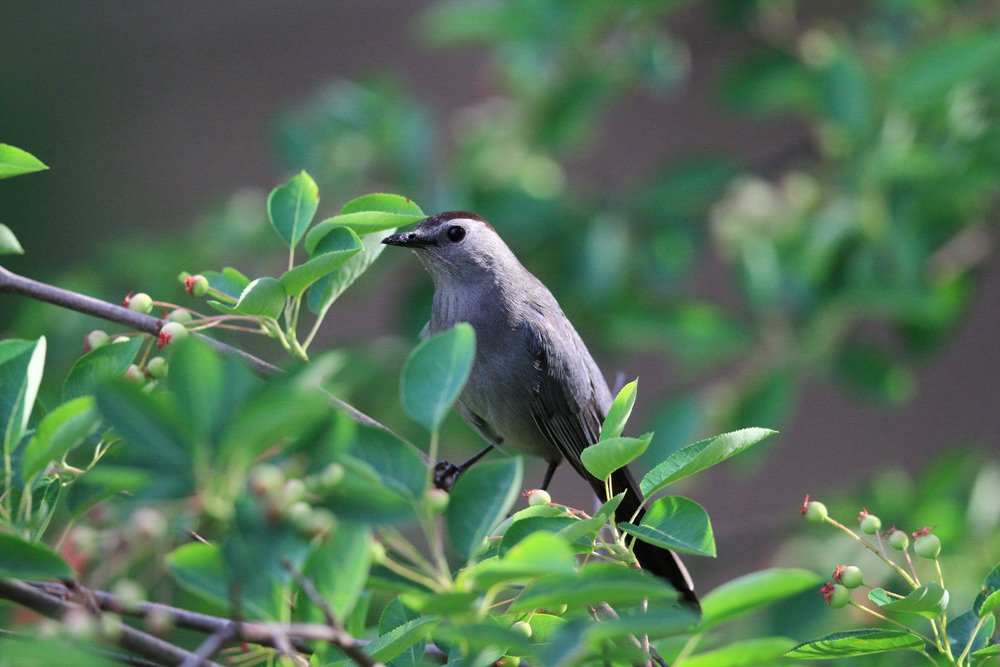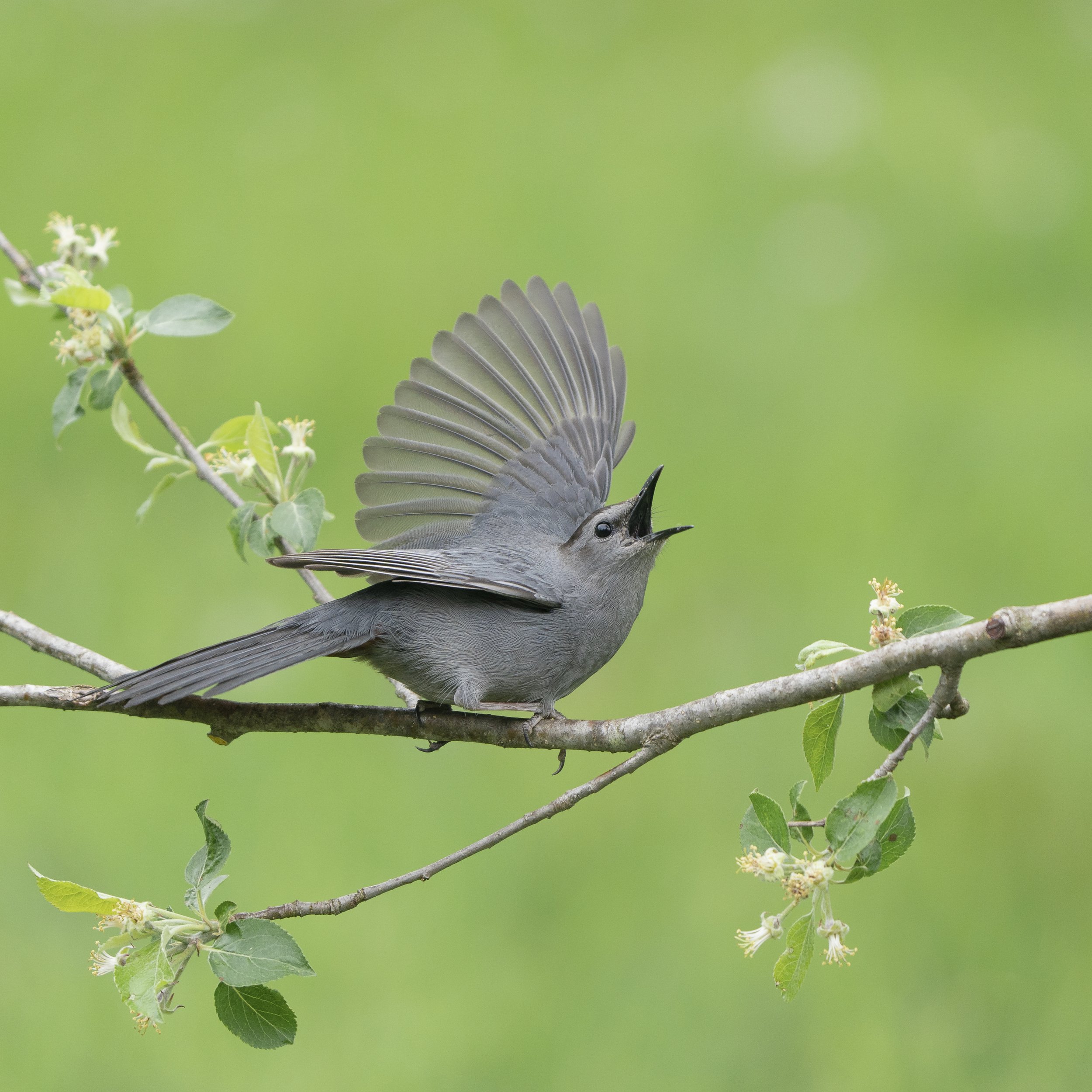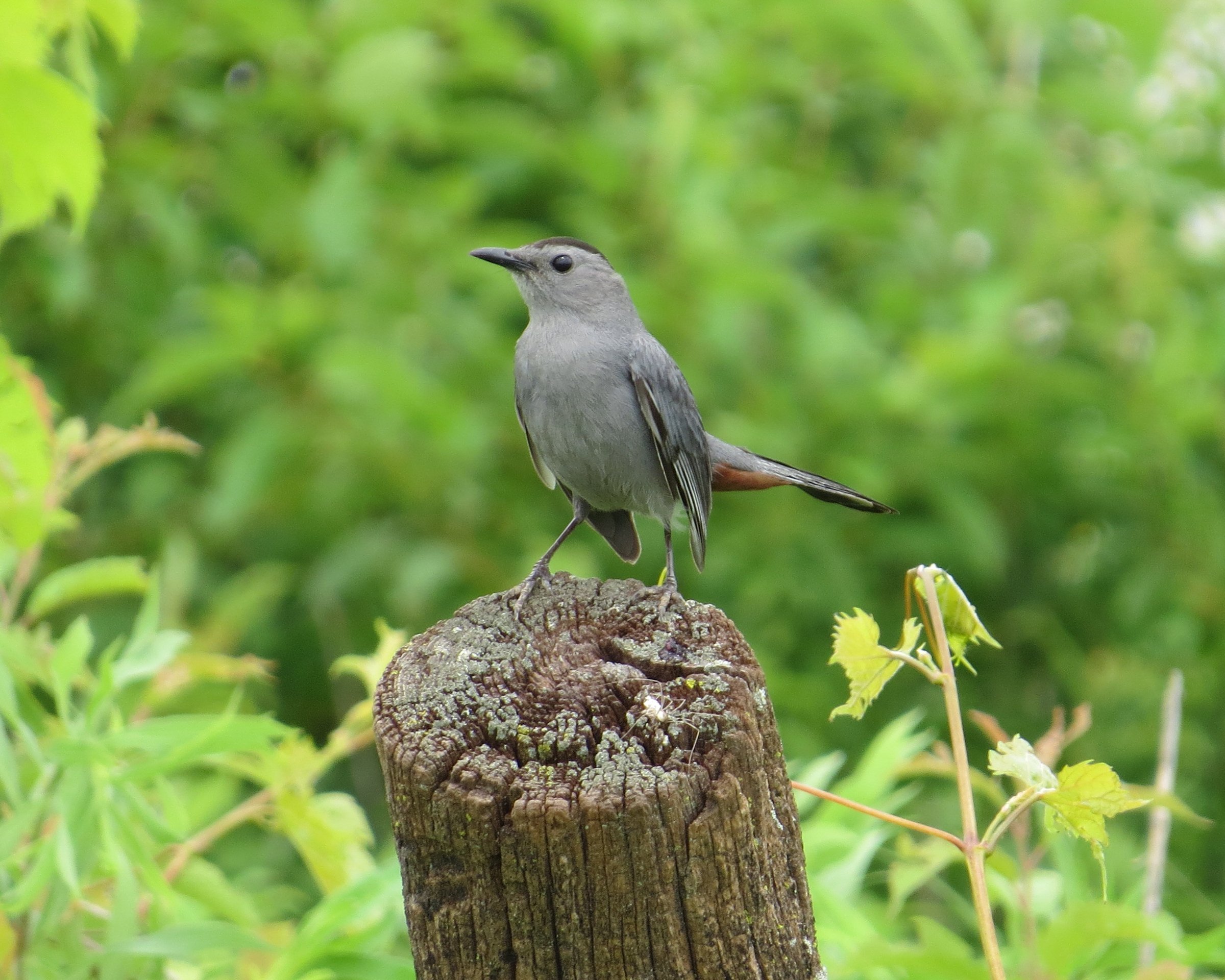Audubon at Home Sanctuary Species: Gray Catbird (Dumetella carolinensis)
Gray Catbird by Ted Rastetter
This all-gray, melodious songbird’s favored habitat is in thickets and shrubs, especially near water, where it can be seen flitting through dense foliage and brush in a rather secretive, furtive way. It sings a song of jumbled sweet musical phrases interspersed with harsh squeals, whistles, and whines. It is a mimic, and may imitate the songs of dozens of bird species, as well as mechanical devices. Most distinctive is its harsh, catlike mewing call. To the Chippewa, its song sounded mournful, and they named it “the bird that cries with grief.”
Gray Catbird is a bird of edge habitats, and is well-adapted to life in the suburbs.
To learn more about ID, range, breeding, and voice, visit Cornell’s All About Birds
| What Gray Catbirds Need | How Can We Help |
|---|---|
| Food and Water: The Gray Catbird's diet is about half animal, half vegetable. Catbirds forage in leaf litter on the ground and in shrubs, bushes, and low trees. In spring and summer, Catbirds eat beetles, caterpillars, grasshoppers, and spiders. Their fall and winter diet is mainly fruit, including blackberries, wild cherries, elderberries, wild grapes, dogwood, sumac, myrtle, sassafras, greenbriar, poison ivy, holly, serviceberry, and honeysuckle. |
|
| Shelter: The Catbird's roosting and sleeping behavior is almost unknown, but they are believed to use the sheltered branches of trees and shrubs. |
|
| Nesting: Catbirds favor wetland edge habitats, especially dense thickets bordering swamps, ponds, and lowland areas. Willow-dogwood shrublands are favored, but any thicket habitat, including yard shrubbery, may be chosen for a nest site. Catbirds like to build their nests in the densest, innermost heart of a thicket, within about nine feet of the ground. |
|
| Other Threats: Catbirds are susceptible to predation by cats and collisons with picture windows. Low flying catbirds also frequently collide with automobiles. |
|
Where to see Gray Catbirds and their Habitat:
Bles Park (Loudoun County), Manassas Battlefield Park (Prince William County), Occoquan Bay National Wildlife Refuge (Fairfax)
Find more using eBird Data: Narrow the view by entering your county in the “DATA FOR:” filter





